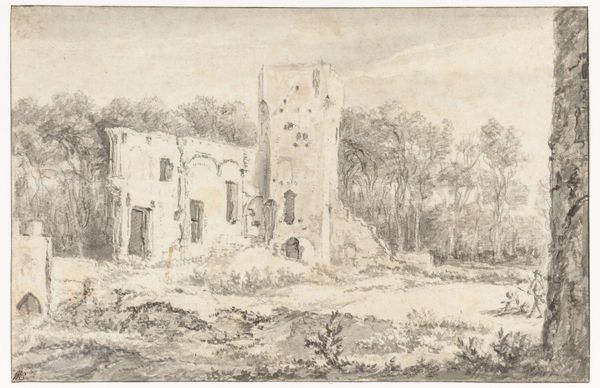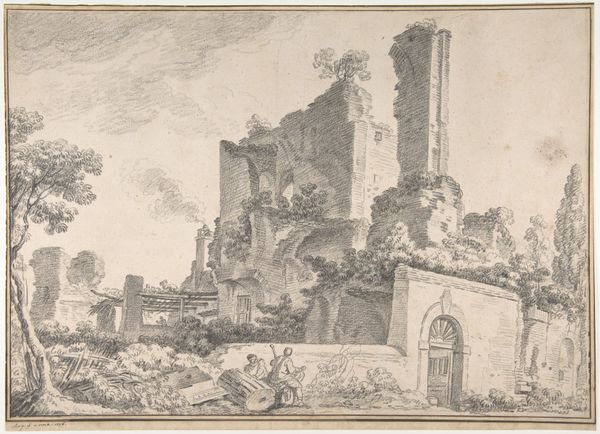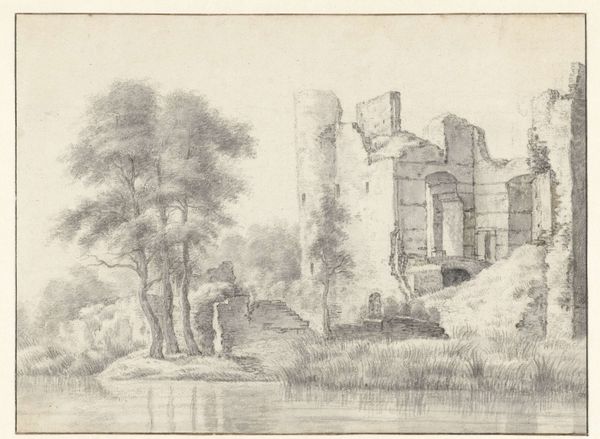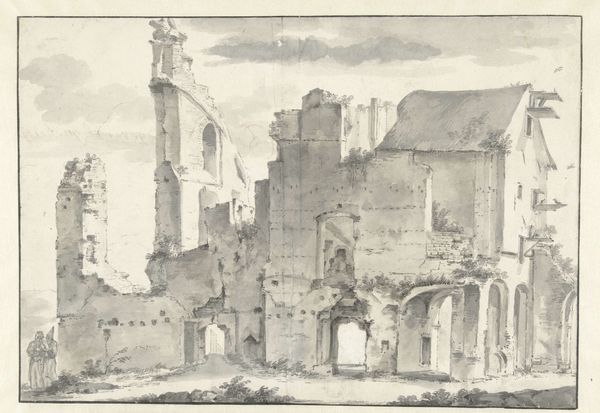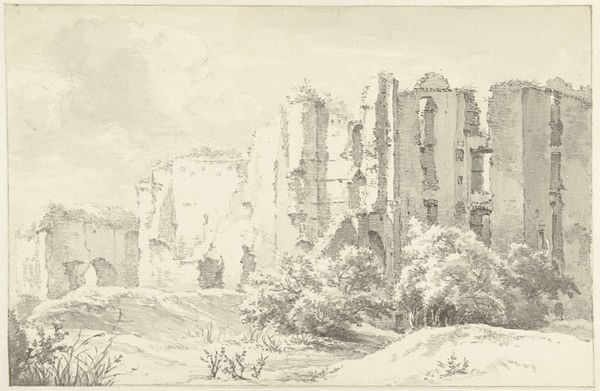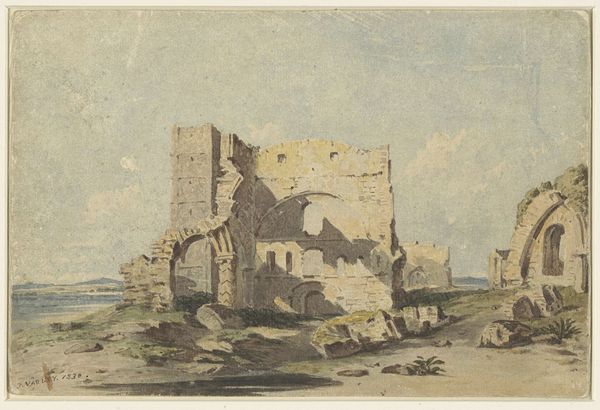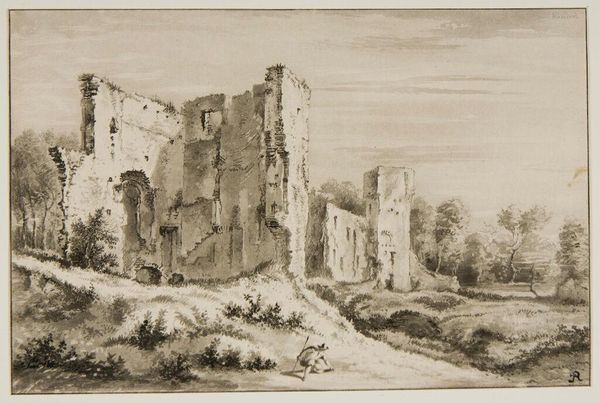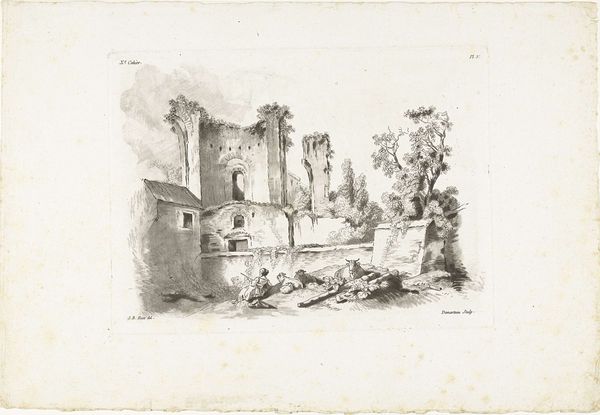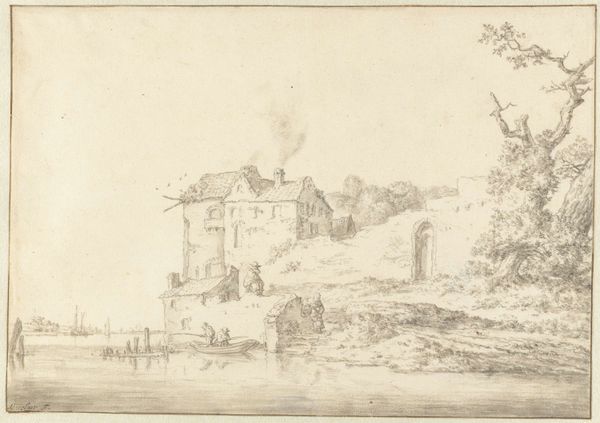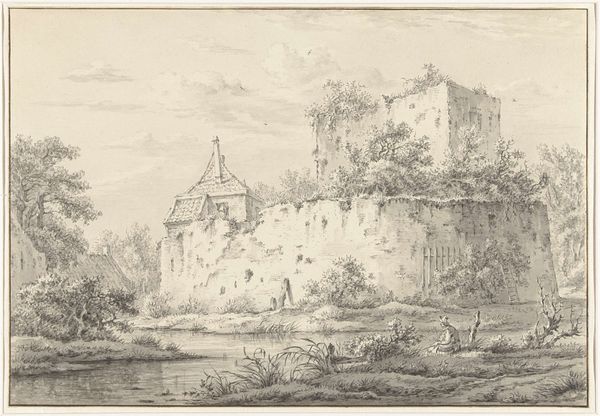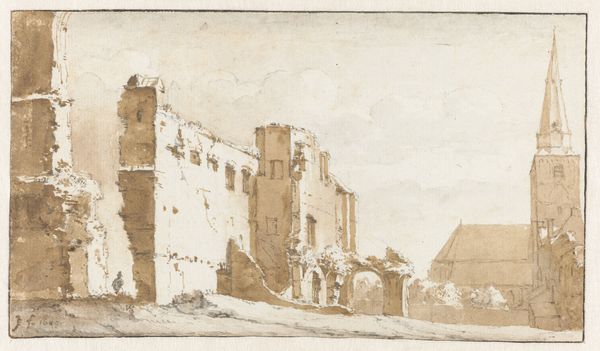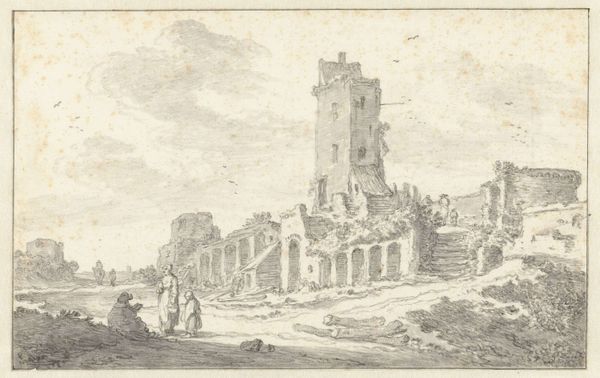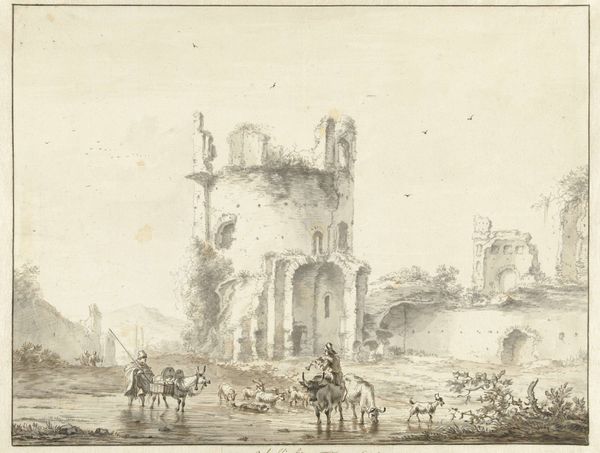
drawing, etching, ink
#
drawing
#
ink painting
#
dutch-golden-age
#
etching
#
pencil sketch
#
landscape
#
ink
#
watercolor
#
realism
Dimensions: height 196 mm, width 297 mm
Copyright: Rijks Museum: Open Domain
Jacob van Ruisdael made this drawing of the ruins of Egmond Castle with pen and brown ink, and grey wash. Drawn sometime in the mid-17th century, this work reflects a period of great upheaval and transformation in the Netherlands. Ruisdael's choice to depict a ruined castle is significant. Castles were once symbols of power and authority, but here it is shown in decay. The ruin could be a comment on the changing social order, perhaps a subtle critique of the old feudal system giving way to a new mercantile society. The Dutch Republic was in its Golden Age, a time of economic prosperity, artistic innovation, and overseas expansion. Yet, beneath the surface, there were tensions between the old aristocracy and the rising merchant class. Ruisdael, as an artist, was part of this changing social landscape. To fully understand the drawing, we can delve into the history of Dutch landscape painting, the biographies of its patrons, and the political pamphlets of the time. The meaning of art is always contingent on its social and institutional context.
Comments
No comments
Be the first to comment and join the conversation on the ultimate creative platform.
